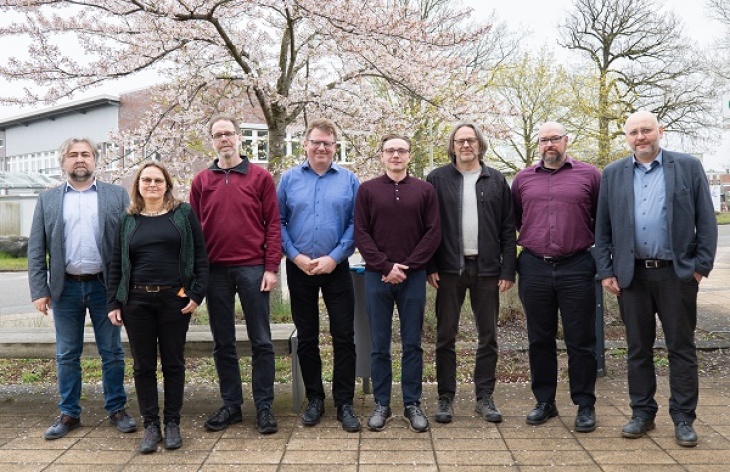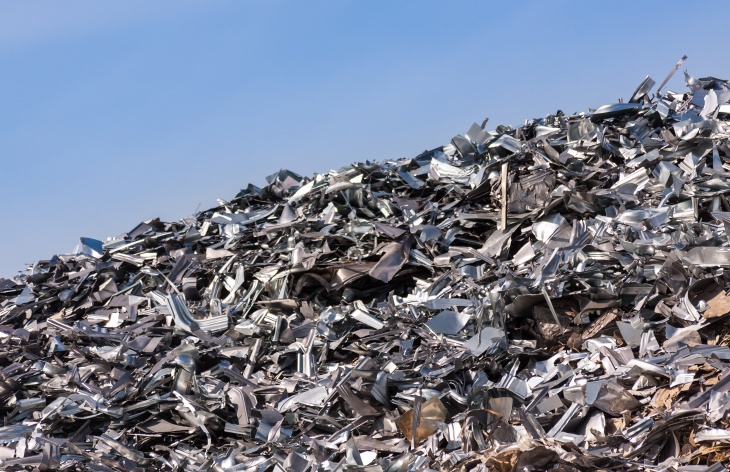Climate-Friendlier Car Production
In a collaborative effort led by the Helmholtz-Zentrum Hereon, research and industry are joining forces to promote environmentally friendly production of lightweight components for the automotive industry. The joint project, "S3-ALU," funded by the German Federal Ministry of Economics and Climate Protection (BMWK), aims to investigate the replacement of pure aluminum with recycled aluminum, potentially reducing the CO2 footprint per vehicle by 55 percent.

Consortium partners at the kick-off meeting at the Helmholtz-Zentrum Hereon in May 2023. Photo: Hereon/ Steffen Niemann
The production of SUVs in Germany emits a staggering 22,000 tons of CO2 on a daily basis. A significant portion of this emissions stems from the use of aluminum, specifically primary aluminum. This form of aluminum is directly derived from bauxite and, due to its weight and corrosion advantages, serves as a key component in automotive alloy production. The research-industry consortium is now exploring the possibility of substituting primary aluminum with secondary aluminum, which is impure and recycled, while maintaining its beneficial properties.
The potential for CO2 savings is enormous: manufacturing one unit of secondary aluminum consumes only five percent of the energy required for primary aluminum production. Applied to automotive production, this translates to a reduction of 0.7 metric tons of CO2 per vehicle or 700,000 metric tons of CO2 annually for SUV production in Germany. With aluminum increasingly being used in electric vehicles to offset the battery weight, the investigation and optimization of climate-friendly alternatives like secondary aluminum become even more critical. Current estimates indicate that aluminum-intensive designs have a CO2 savings potential of up to 1.7 tons per vehicle.
The Role of Digital Twins

Old material becomes new. Photo: istock/allou
To identify the most suitable substitute for primary aluminum, researchers will employ a digital twin to model different compositions of secondary aluminum. This approach eliminates the need for extensive experimentation with various material variants by exploring them within the model, thereby saving time and resources. Preliminary investigations have already shown that minor impurities in primary aluminum are acceptable for safe material usage. However, determining the permissible proportion and composition of recycled aluminum poses a significant question, one that can be answered through the use of a digital twin.
Eugen Gazenbiller, a doctoral student at the Hereon Institute for Surface Research, explains, "The development of a digital twin, a multi-scale physical representation of the aluminum secondary alloy under investigation, will greatly reduce experimental efforts and allow for evaluating the potential use of non-uniform quality scrap in material manufacturing or production."
The joint project, "S3-ALU: Simulation methodologies for the evaluation of components and systems for sustainable lightweight construction with secondary aluminum," has received a funding grant of 2 million euros over three years from the German Federal Ministry of Economics and Climate Protection (BMWK). Research partners include the Max Planck Institute for Iron Research (MPIE), Access e.V., and the Helmholtz-Zentrum Hereon, with the latter coordinating the project. Industry collaborators encompass Volkswagen AG, Bode - die Tür GmbH, and LGL Bad Langensalza GmbH.
Background: Digital Twins
A digital twin is a virtual representation of a real process, object, or material, maintaining a two-way connection. This means that any changes made to the actual object are incorporated into the digital twin in near real-time. Subsequently, the digital twin can be subjected to various conditions, simulating potential "what-if" scenarios for the physical object. For instance, materials and workpieces can be digitally tested under different circumstances before undergoing the complete production process.
Further Information
Contact
Scientist
Phone: +49 (0) 4152 87-1936
Institute of Surface Science
Helmholtz-Zentrum Hereon
Press Officer
Phone: +49 (0) 4152 87-1648
Communication and Media
Helmholtz-Zentrum Hereon
